A winery in the Yarra Valley is fertile ground for an architecture graduate exploring the design-make model. Annie Reid investigates.
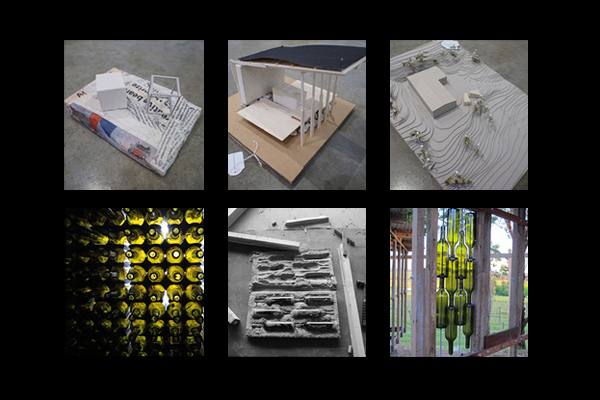
June 18th, 2013
The experimental project was conceived by Elizabeth Hamer, a recent graduate of the newly formed Masters of Architecture program at Monash University.
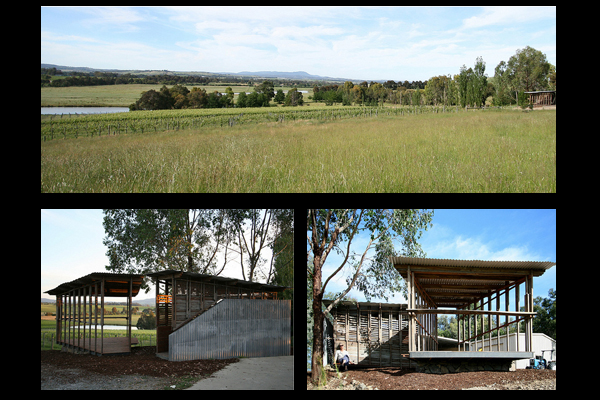
Along with a team of volunteers, Hamer designed and constructed two wine tasting pavilions at Tarrahill Winery; exploring how the actual process of making something can become the predominant design methodology.
“What if a greater connection to the material and sensual realities of architecture was to occur through the design process?” Hamer poses.
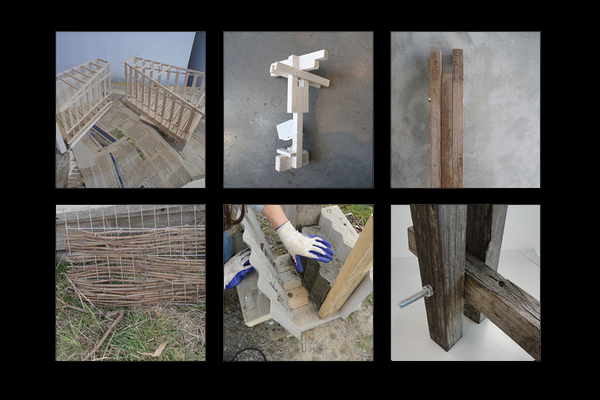
Over an eight week construction process, the project was given space to evolve and change accordingly, prompted by encounters with clients, engineers, tradespeople, site, council permit restrictions and volunteers; with mistakes made and opportunities seized.
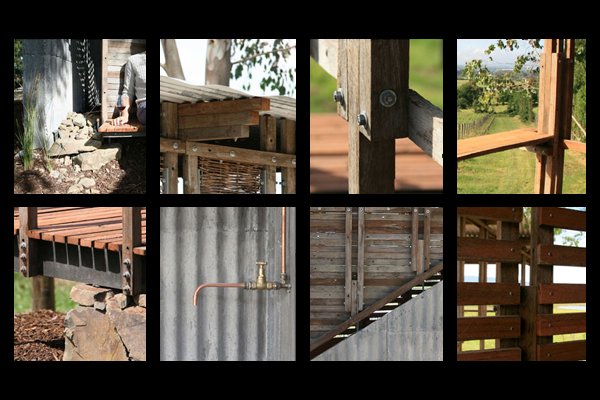
Waste materials from the winery were experimented with too, heralding the beginning of model making at various scales. It allowed the team to manipulate various atmospheric changes, material limitations, budgets and engineering requirements.
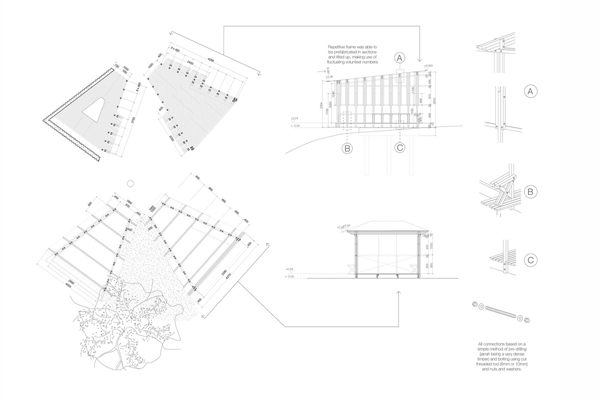
Built from recycled Jarrah vineyard posts, corrugated iron, textured concrete and local stone, the pavilions offer simple detailing. One features a central, zinc bar, filtered light and timber slates, while the other is an open space with a single bar facing views. Both form an outdoor space between them.

“I found that a direct engagement with the building process meant that mistakes made or unexpected situations could be dealt with immediately and creatively – treated as an opportunity for yet another iteration of the design,” she says.
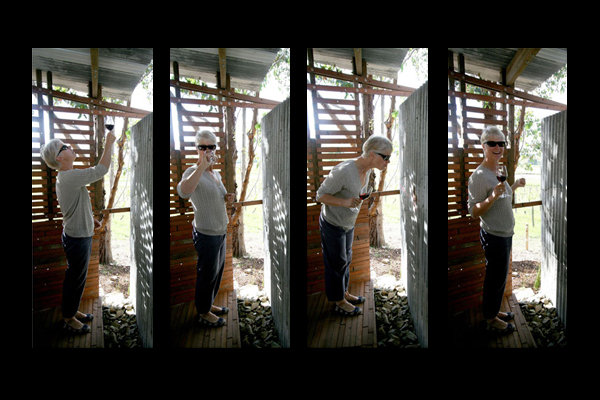
They tell a story of history too, such as the wobbly lines, dents and bulges in the concrete that refer to construction challenges. But through the ‘spit wall’ that will stain with wine, and the zinc bar top that will attract scratches, new narratives of use will emerge.
“Architecture is ultimately both designed and made, and an understanding of the making process can only make us better designers,” Hamer says.
Monash University
A searchable and comprehensive guide for specifying leading products and their suppliers
Keep up to date with the latest and greatest from our industry BFF's!

Sub-Zero and Wolf’s prestigious Kitchen Design Contest (KDC) has celebrated the very best in kitchen innovation and aesthetics for three decades now. Recognising premier kitchen design professionals from around the globe, the KDC facilitates innovation, style and functionality that pushes boundaries.

Create a configuration to suit your needs with this curved collection.

In the pursuit of an uplifting synergy between the inner world and the surrounding environment, internationally acclaimed Interior Architect and Designer Lorena Gaxiola transform the vibration of the auspicious number ‘8’ into mesmerising artistry alongside the Feltex design team, brought to you by GH Commercial.

Savage Design’s approach to understanding the relationship between design concepts and user experience, particularly with metalwork, transcends traditional boundaries, blending timeless craftsmanship with digital innovation to create enduring elegance in objects, furnishings, and door furniture.

Hong Kong’s M+ museum is taking a look back over the work and ideas of avant-garde architectural group Archigram, with Archigram Cities – an online and offline celebration of the group.

Brisbane-based commercial design supplier Incorporate Space, held a stellar ‘Brisbane Interiors’ event on Brisbane’s stunning Seadeck vessel on Wednesday night. Take a look at the great sunny North’s design community!

Luxury used to mean the consumption of precious objects and items. Then it became the consumption of exclusive services. Now, it’s all about “transformative experiences” – this is luxury 3.0. And Carr is pioneering this outrageous new archetype with one of 2017’s most Instagrammed projects.
The internet never sleeps! Here's the stuff you might have missed

Caring for our mental health is paramount these days and architecture and design can lead the way as Hassell shows in its latest project in Queensland.

Suitable for applications ranging from schools and retail outlets to computer rooms and X-ray suites, Palettone comes in two varieties and a choice of more than fifty colours.